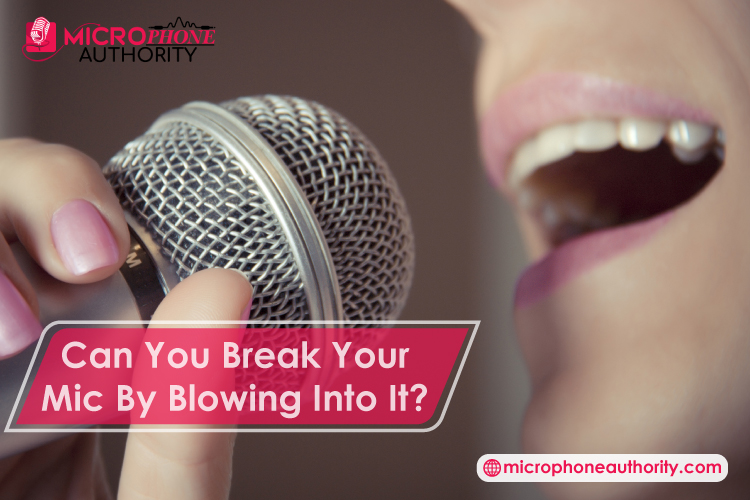Last Updated on April 5, 2023 by Robert Mejia
In most cases, blowing your microphone won’t damage the microphone, but in the rare case, might damage the loudspeaker
So, yes, you can break your microphone by blowing into it, especially if it is a ribbon microphone.
If you have ever used a ribbon microphone, you must have learned that these mics are extremely fragile. You should never test a ribbon mic by blowing into it as this could make the delicate ribbon to stretch with time (if it does not break immediately).
When you step up on stage and are not sure if the mic is working, you might be tempted to blow into the mic to test if it’s working. After all, it will be so awkward if you start talking, only to find out that the mic is not live.
While the mic may not break immediately when you blow into it, the effects of your warm and humid air will eventually shorten your mic’s life.
Are you wondering how this is even possible?
Well, relax because you are about to learn that in this text!
How Does Blowing Into A Mic Break The Mic?
Microphones are designed to respond to every air motion. Thus, when you blow into it, you are actually giving the mic a 100 percent air motion that does not wave component. The air blown is just like uncontrolled noise.
Microphones are sensitive systems, and they don’t know how to ignore any air movement. Even when you blow into a mic gently, you realize that it still produces a loud sound. The loud noise could not only damage the speaker’s but the audience’s hearing as well.
Apart from that unexpected loud sound, here is what happens when you keep blowing into your mic:
1) It Weakens the Mic’s Diaphragm
Despite that the diaphragm may seem to have nothing to do with converting audio signals to digital data, diaphragms have a lot to do with the sound a mic produces. It acts as a transducer, determining the mic’s frequency and polar responsiveness.
When using a microphone to sing or address a group of people, you interact directly with the diaphragm.
When you blow into a mic, you are practically storming a stream of air into the thin and lightweight diaphragm, present in every working microphone.
Keep in mind that diaphragms are delicately mounted to ensure that they can convert vibrations into electrical impulses. They must keep moving back and forth because this is what makes the mics act as transducers.
Note that the more expensive the mic is, the thinner and more fragile their diaphragm is, for higher sensitivity. So, it will be stupid to blow into a $10,000 microphone!
Therefore, the moving air you blow will damage the mic’s diaphragm sooner or later.
2) It Rips Off the Ribbon
This applies to ribbon microphones. Blowing into your ribbon mic will ultimately stretch the ribbon, which acts as the diaphragm in these mics.
When the ribbon is stretched, you may not realize it immediately, since the mic may continue to function well for some time.
Besides, ribbon mics have very thin and fragile ribbons, making them vulnerable to gusts of air. When the ribbon stretches, it is permanently destroyed.
3) It Will Lead to Corrosion
The air you blow to the mic contains moisture, which is a lethal issue with many microphones.
Humidity leads to wearing out, especially in active mics and they will break with time. With moisture, the metallic parts of your mic will condense.
The mic becomes worse when this condensation is combined with dust, as it results in clogging in the mic’s open parts.
Final Thoughts
If you think that blowing into a microphone is a good way to test it, bear in mind that it is also an excellent way to damage your microphone.
Along with damage, blowing into a mic is an unprofessional way to test whether a mic is live.
So, if you want to test if a mic is on, or broken, the best way is to say ‘hello,’ ‘testing,’ or ‘1,2,3.’ They are safer alternatives as compared to blowing.





